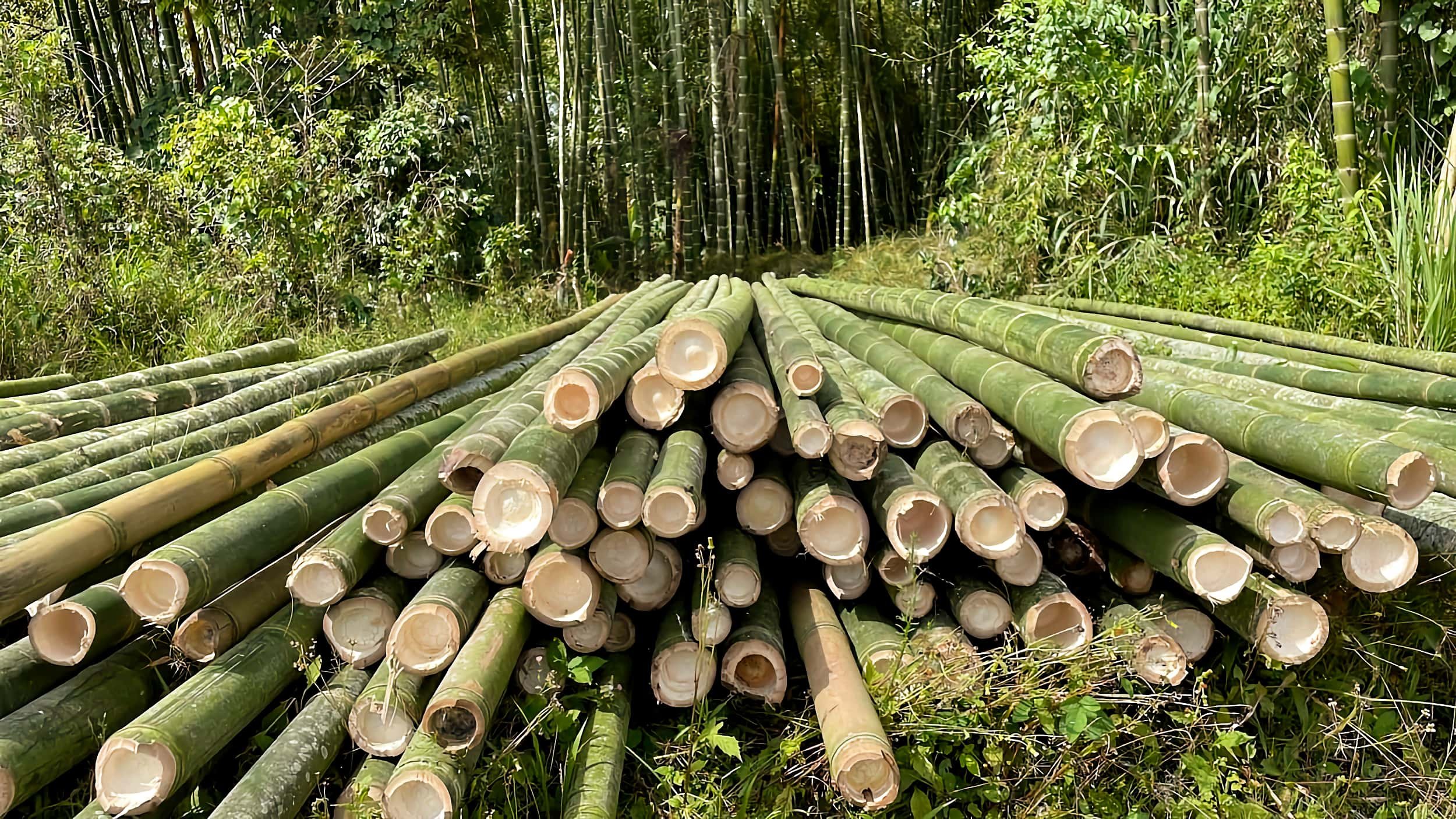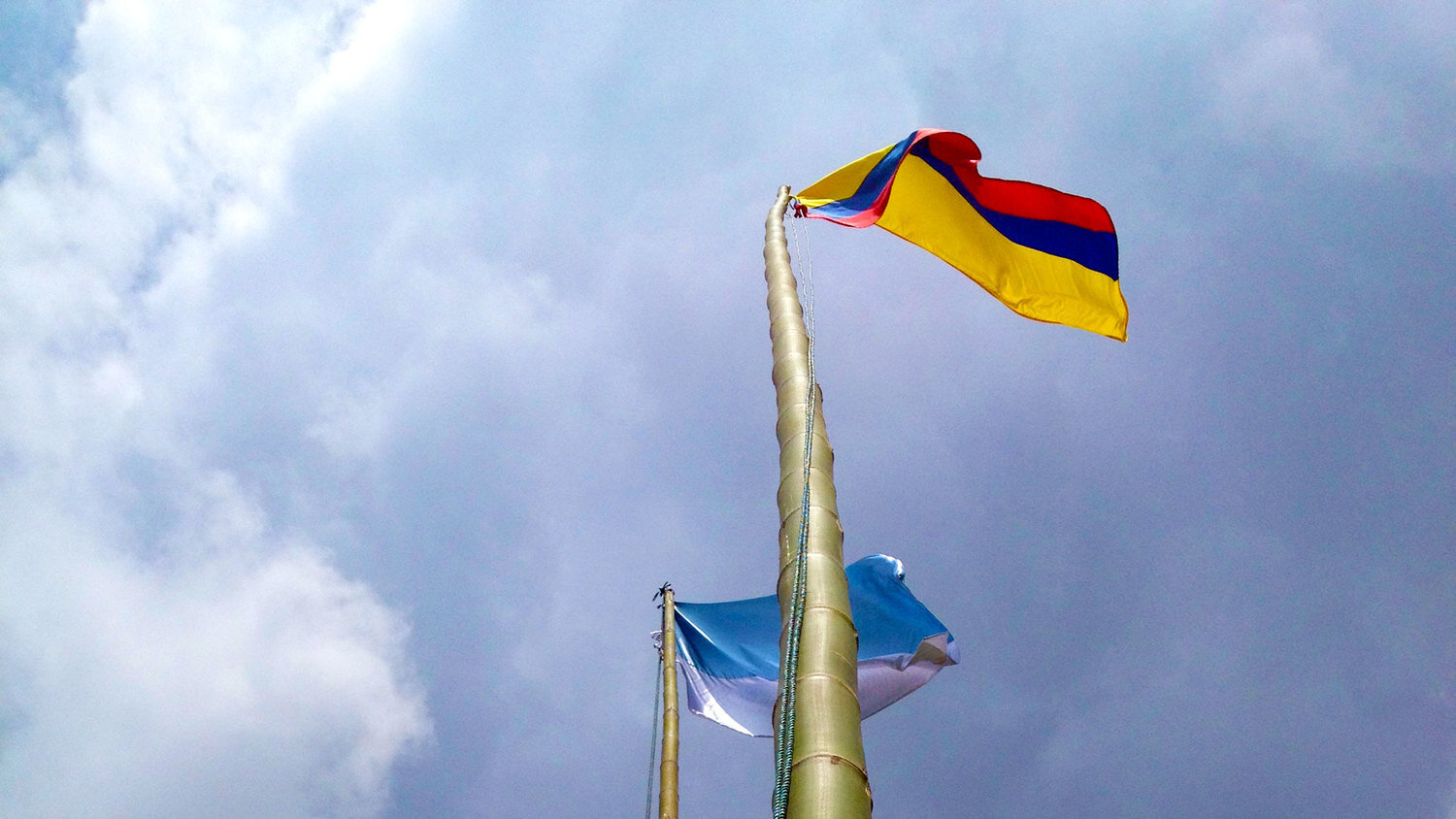101 Edible Bamboo Species You Can Eat
Can you eat bamboo? Yes, but not all of them… Of the 1718 known bamboo species worldwide, 101 species are recorded to have edible shoots. Edible meaning a satisfactory to delicious taste, because even though some bamboo shoots are classified as edible, they must be carefully prepared and boiled before consuming!
Bamboo shoots may contain significant, potentially very toxic amounts of cyanogenic glycosides. Various reports even place bamboo shoots amongst the most potentially toxic plant materials, exceeding apricot, bitter almond stones and considerably exceeding that of cassava.
However, the cyanogenic glycoside in bamboo is in fact taxiphyllin. Taxiphyllin is unusual amongst other similar compounds in the sense that it degrades readily in boiling water. Thus boiling or cooking bamboo shoots before you eat them will eliminate any toxicity. Of course you could also buy canned bamboo shoots that are ready for immediate consumption.
A Complete List of all known Edible Bamboo Species
| Species | Common Name | Quality | Rating |
|---|---|---|---|
| Acidosasa edulis | Delicious | (5/5) | |
| Acidosasa Iingchuanensis | Edible | (3/5) | |
| Bambusa balcooa | Female Bamboo | Good | (4/5) |
| Bambusa bambos | Giant Thorny Bamboo | Edible | (3/5) |
| Bambusa beecheyana | Beechey Bamboo | Good | (4/5) |
| Bambusa blumeana | Spiny Bamboo | Good | (4/5) |
| Bambusa gibboides | Good | (4/5) | |
| Bambusa polymorpha | Burmese Bamboo | Good | (4/5) |
| Bambusa tulda | Bengal Bamboo | Good | (4/5) |
| Bambusa tuldoides | Punting Pole Bamboo | Good | (4/5) |
| Bambusa vulgaris | Common Bamboo | Edible | (3/5) |
| Chimonobambusa communis | Good | (4/5) | |
| Chimonobambusa macrophylla | Delicious | (5/5) | |
| Chimonobambusa marmorea | Marbled Bamboo | Delicious | (5/5) |
| Chimonobambusa pachystachys | Delicious | (5/5) | |
| Chimonobambusa puberula | Delicious | (5/5) | |
| Chimonobambusa quadrangularis | Square Bamboo | Delicious | (5/5) |
| Chimonobambusa rigidula | Delicious | (5/5) | |
| Chimonobambusa szechuanensis | Delicious | (5/5) | |
| Chimonobambusa tumidissinoda | Walking Stick Bamboo | Delicious | (5/5) |
| Chimonobambusa utilis | Good | (4/5) | |
| Chimonocalamus delicatus | Aromatic bamboo | Delicious | (5/5) |
| Dendrocalamus asper | Rough Bamboo | Good | (4/5) |
| Dendrocalamus brandisii | Velvet Leaf Bamboo | Good | (4/5) |
| Dendrocalamus giganteus | Giant Bamboo | Good | (4/5) |
| Dendrocalamus latiflorus | Taiwan Giant Bamboo | Good | (4/5) |
| Dendrocalamus latiflorus 'Mei-Nung' | Good | (4/5) | |
| Dendrocalamus membranaceus | Waya Bamboo | Edible | (3/5) |
| Dendrocalamus strictus | Male Bamboo | Edible | (3/5) |
| Fargesia robusta | Umbrella Bamboo | Edible | (3/5) |
| Gigantochloa atter | Giant Atter | Good | (4/5) |
| Gigantochloa levis | Smooth Shoot Gigantochloa | Delicious | (5/5) |
| Gigantochloa ligulata | Good | (4/5) | |
| Gigantochloa nigrociliata | Black Hair Giant Bamboo | Good | (4/5) |
| Gigantochloa pruriens | Good | (4/5) | |
| Gigantochloa robusta | Good | (4/5) | |
| Gigantochloa thoii | Good | (4/5) | |
| Guadua sarcocarpa | Fleshy Fruit Guadua | Good | (4/5) |
| Himalayacalamus falconeri | Good | (4/5) | |
| Nastus elatus | New Guinea Green | Edible | (3/5) |
| Oxytenanthera abyssinica | African Lowland Bamboo | Edible | (3/5) |
| Phyllostachys acuta | Delicious | (5/5) | |
| Phyllostachys angusta | Stone Bamboo | Edible | (3/5) |
| Phyllostachys arcana | Arcana Bamboo | Edible | (3/5) |
| Phyllostachys atrovaginata | Incense Bamboo | Edible | (3/5) |
| Phyllostachys bambusoides | Madake | Bitter | (2/5) |
| Phyllostachys bambusoides f. shouzhu | Edible | (3/5) | |
| Phyllostachys bissetii | Edible | (3/5) | |
| Phyllostachys circumpilis | Edible | (3/5) | |
| Phyllostachys concava | Edible | (3/5) | |
| Phyllostachys decora | Beautiful Bamboo | Edible | (3/5) |
| Phyllostachys dulcis | Sweetshoot Bamboo | Delicious | (5/5) |
| Phyllostachys edulis | Moso Bamboo | Good | (4/5) |
| Phyllostachys edulis f. edulis | Delicious | (5/5) | |
| Phyllostachys elegans | Elegant Bamboo | Delicious | (5/5) |
| Phyllostachys fimbriligula | Delicious | (5/5) | |
| Phyllostachys flexuosa | Zig-Zag Bamboo | Delicious | (5/5) |
| Phyllostachys glabrata | Delicious | (5/5) | |
| Phyllostachys glauca | Good | (4/5) | |
| Phyllostachys glauca var. variabilis | Edible | (3/5) | |
| Phyllostachys heteroclada | Water Bamboo | Edible | (3/5) |
| Phyllostachys incarnata | Delicious | (5/5) | |
| Phyllostachys iridescens | Delicious | (5/5) | |
| Phyllostachys makinoi | Makino Bamboo | Edible | (3/5) |
| Phyllostachys meyeri | Meyer’s Bamboo | Edible | (3/5) |
| Phyllostachys mirabilis | Edible | (3/5) | |
| Phyllostachys nidularia | Delicious | (5/5) | |
| Phyllostachys nidularia f. farcta | Edible | (3/5) | |
| Phyllostachys nidularia f. speciosa | Edible | (3/5) | |
| Phyllostachys nidularia f. sulfurea | Edible | (3/5) | |
| Phyllostachys nigella | Delicious | (5/5) | |
| Phyllostachys nigra var. henonis | Delicious | (5/5) | |
| Phyllostachys nuda | Nude Sheath Bamboo | Delicious | (5/5) |
| Phyllostachys parvifolia | Delicious | (5/5) | |
| Phyllostachys platyglossa | Delicious | (5/5) | |
| Phyllostachys praecox | Delicious | (5/5) | |
| Phyllostachys praecox f. notata | Edible | (3/5) | |
| Phyllostachys praecox f. viridisulcata | Delicious | (5/5) | |
| Phyllostachys prominens | Good | (4/5) | |
| Phyllostachys propinqua | Good | (4/5) | |
| Phyllostachys propinqua f. lanuginosa | Delicious | (5/5) | |
| Phyllostachys rivalis | Delicious | (5/5) | |
| Phyllostachys robustiramea | Edible | (3/5) | |
| Phyllostachys rubella | Edible | (3/5) | |
| Phyllostachys rubromarginata | Red Margin Bamboo | Edible | (3/5) |
| Phyllostachys rutila | Edible | (3/5) | |
| Phyllostachys sapida | Edible | (3/5) | |
| Phyllostachys sulphurea f. laqueata | Good | (4/5) | |
| Phyllostachys sulphurea f. viridis | Good | (4/5) | |
| Phyllostachys tianmuensis | Edible | (3/5) | |
| Phyllostachys viridiglaucescens | Greenwax Golden Bamboo | Edible | (3/5) |
| Phyllostachys vivax | Chinese Timber Bamboo | Delicious | (5/5) |
| Phyllostachys vivax 'Huangwenzhu' | Yellow Groove Vivax | Edible | (3/5) |
| Phyllostachys vivax f. aureocaulis | Golden Chinese Timber Bamboo | Edible | (3/5) |
| Phyllostachys yunhoensis | Delicious | (5/5) | |
| Pleioblastus hindsii | Edible | (3/5) | |
| Sasa kurilensis | Chishima Zasa | Good | (4/5) |
| Sasaella masamuneana | Edible | (3/5) | |
| Thamnocalamus aristatus | Edible | (3/5) | |
| Thyrsostachys siamensis | Monastery Bamboo | Good | (4/5) |
| Yushania maling | Good | (4/5) |
Impact of Food-based Cyanide on Humans
Cyanide can and does cause significant health problems at sub-lethal levels. Some of the cassava-eaters in Africa have suffered harmful effects to the nervous system, including weakness of the fingers and toes, difficulty walking, dimness of vision, and deafness.
Some children who ate large quantities of apricot stones, which naturally contain cyanide as part of complex sugars, had rapid breathing, low blood pressure, headaches, and coma, and some died.
How to Detect Cyanide in Bamboo Shoots?
There are simple test kits to determine the presence of cyanide in bamboo shoots that can be used by an unskilled person for looking at cyanide levels in bamboo shoots, cassava roots and products, as well as other cyanogenic plant parts such as sorghum leaves, and flax seed meal.
The general principle is that a small sample of the plant or product is placed in a container with filter paper containing the required catalyst and a piece of picrate paper that reveals the amount of poison produced. The bottle is left overnight at room temperature. Next morning, when the breakdown to poisonous gas is completed, the color of the picrate paper indicates the level of toxicity.
How to Remove Cyanide in Bamboo Shoots?
The cyanogen in bamboo is taxiphyllin and therefore one of the few cyanogenic compounds that decompose quickly when placed in boiling water. Bamboo becomes edible because of this instability.
Boiling bamboo shoots for 20 minutes at 98°C removes nearly 70% of the HCN while all improvements on that (higher temperatures and longer intervals) remove progressively up to 96%. Thus even the highest quoted figures of cyanide found in bamboo shoots would be detoxified after cooking them for 2 hours.
Prepare fresh bamboo shoots for adding to your favorite dishes. Learn how to cook bamboo the traditional Japanese way.







Are shoots of the Ghost bamboo (Dendrocalamus minor 'Amoenus') edible? When boiling the bamboo shoots, how many water changes are required?